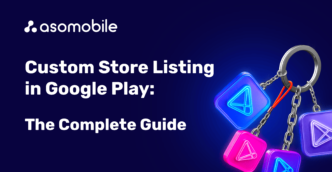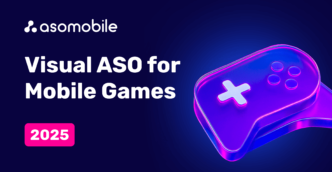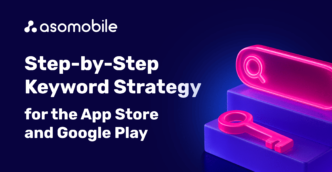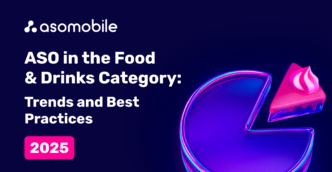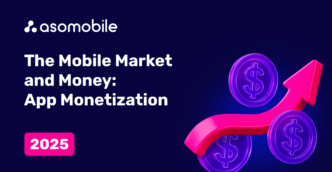Promotional content on Google Play 2024
In this article, we will understand together what Promotional content is on Google Play and how it differs from in-app materials. Let’s break down the requirements for LiveOps, find out how to set up advertising content, and look at examples properly.
So what is promotional content on Google Play?
Google itself does not give an exact definition but starts from its purpose. We propose to move away from abstract formulations and get an idea of the promotional content by answering several defining questions about it. Before answering, it’s worth clarifying that promotional content and LiveOps are the same. Live Operations means “actions in real-time.” in English. So, its functions and focus become clearer immediately.
Interesting fact: the original name was LiveOps, but Google later changed the name to “ad content” to convey the essence more clearly.
So, questions.
- What is the purpose of promotional content?
It’s simple and obvious: increase user engagement, lifetime value, and app revenue.
- How to achieve your goal?
Through information about events, new products, promotions, special offers and significant updates to the application.
- Where do we report this?
Inside the Google Market in the Games Home, Store Listing Page, Event Tab, Search Results sections.
By the way, it is the placement of advertising that is the main difference between LiveOps and in-app, but more on that below.
- How to say about this?
Through three main types of advertising content:
- Special offers
- Time limited events
- Major updates
Let's expand our understanding of the listed types of LiveOps.
Special offers.
These include everything that might interest users: discounts, benefits, rewards, subscriptions. Here we are talking about digital products (paid and free) and real goods and services.
- Discounts apply to products, categories and assortment. They can be expressed as a percentage or as a fixed amount. For example, “10% discount on the entire range” or “5 euros off your first order.”
- Additional benefits provide benefits or bonuses to users. Let's take game examples: “10 speedups for the price of 5”, “newbie set for 1 dollar instead of 10”.
- Free rewards are gifts to users that introduce them to an app without directly encouraging them to make purchases. Let's say, a no-price skin or an unlimited game where the number of lives (attempts) is limited.
- Trial subscriptions - demo version for a limited period without payment or at a reduced starting cost. We are talking about “free trial period for learning a language in our app is only 7 days” and “don’t miss out 30% discount on an annual subscription.”
Time limited events
We are talking about live broadcasts and competitions of all kinds, but without promotions.
- Live video format - many users participate simultaneously and all events take place in real time. All kinds of sports broadcasts and award ceremonies are perhaps the most striking examples. Competitions and tournaments - users compete for awards, prizes or go towards a goal. Competitions of all topics are appropriate here.
- Exclusive - everything that is not included in the formats listed above. For example, a mini-quest in the game or limited quantities of goods.
Major updates
- Expansion of app functionality, important announcements
- New items - any fresh content. Game levels, freshly released series or films, previously unknown skins and heroes.
- Pre-registration updates - news, demos, new content alerts, announcements.
Some statistics: Google says that advertising content increases the number of active users by 2% and increases revenue by 4% over 28 days compared to apps that ignore this option. So, we use it without hesitation, the indicated percentages are not a cake walk
What are the differences between an in-app event and promotional content?
It is better to see something once, than to hear about it a thousand times. So for ease of perception we have divided the information into two main categories: similarities and differences.
Similarities:
- The goal is to increase user engagement, lifetime value and app monetization.
- The way to achieve the goal is information through offers, events, updates (the nuances are outlined in the table below)
- Using Youtube links for video content
- The period for checking event cards is at least 24 hours
Differences:
| Subject | In-app events в App Store | Promotional content в Google Play |
| Location | ||
| Event In-App LiveOps | keyword search results along with the app you are looking for instead of screenshots directly inside the app editorial selections | Games Home Store Listing Page Event Tab Search Results |
| Technical requirements | ||
| Name of an event | up to 30 characters | no limit |
| Tag line | up to 50 characters | up to 80 characters |
| Description | up to 120 characters | up to 500 characters (100 characters min) |
| Images | Event card 1920x1080 pixels, 16:9 aspect ratio Event detail page 1080x1920 pixels, 9:16 aspect ratio. | Main image 1920x1080 pixels, aspect ratio 16:9 Icon 1080x1080 pixels, aspect ratio 1:1 |
| Events | ||
| Type | Challenge, competition, live event, major update, new season, special event | Offer, Event, Major Update, Pre-Registration Announcement, Crossover |
| Quantity | Approval up to 10 ones, simultaneous placement no more than 5 ones | No limit |
| Duration | Up to 31 days | 7 days (major updates and pre-registration)28 days (events, crossovers)no restrictions (offers) |
Let's summarize: inn-app events on the App Store are the same content as advertising content on Google Play, but just with a different name. They have a common focus, goals, tools and arsenal. Noticeable differences lie in the technical requirements for the content, the location of its placement and its acceptable timing.
What are the requirements for promotional content?
We answer - there are many requirements, but they are all feasible and justified. And, most importantly, they were created not to interfere with developers and marketers of all stripes, but, first of all, for the convenience of users. And this already makes life easier for us - for everyone involved in promoting applications. After all, the more convenient it is for users, the better for us and our application.
Let's move from words to action. General requirements for promotional content are:
- Answers to three main questions:
- Tagline. We answer the question - what do we offer? The answer should be short and clear. And this entire answer should fit into a slogan.
- Description. We give an answer to the question - why is this advertising content important/beneficial/interesting/useful for users? Here we specify the requirements and conditions for participation in the proposed event. Ideally, the description and slogan should correlate with each other.
- The description should also answer the question - how? How users can participate/access/activate/etc.
- Uniqueness. Advertising content should only inform users about new and special events/updates. Everything general and regular has nothing to do with advertising content.
- Generally accepted. LiveOps should be applicable to all users. With two exceptions: for the target audience - new users. You have a convincing argument why your advertising content is suitable only for a minimum target audience.
- Synchronization. The event and promotional content about it are launched simultaneously. Violation is subject to a warning or removal of content from the Play Console for 30 days. But Google is kind and therefore reserves the right to edit or cancel an event with LiveOps all in the same Play Console. So let's check our watches, ladies and gentlemen.
- Easily accessible. Users should easily and simply find what we describe in advertising content inside an application or game. So that it is loud and clear. We leave the Knossos labyrinth to the Minotaur, and we lead our beloved users by the hand from beginning to end.
- Censorship and intellectual property. All information in advertising content must be decent and noble, not stolen from trademarks and not violate the property rights of third parties. We act strictly within the law.
- Uniformity and consistency. All components of advertising content (tagline, description, image and video) should inform users about the same thing. The option when the slogan says “40% discount on the entire range”, and in the description they offer a “last size” promotion is not an option. This is a scam in its purest form and decent marketers do not behave this way. So we won't.
- Plagiarism. Even among themselves it is prohibited. Each new LiveOps, like each new child of the same parents, must be unique in everything (text, graphics, video). Partial repetition or subtle changes are also taboo. We are creative, we brainstorm, we create.
- High editorial standards are a direct statement because Google wants to provide users with a quality experience. That's why:
- We monitor spelling and grammar. We don’t blush ourselves and we don’t disgrace Google.
- We fill it with meaning and avoid ambiguities.
- We look good - visual components should look brand new. No distortion. We remember that people are greeted by their clothes.
LiveOps that does not meet these three points will be rejected. Therefore, we meet and strive for high standards.
- Google points out:
- send one promotional content at a time
- do not duplicate submissions of the same content
- localize advertising content if it is addressed to several regions
- Keep in mind that LiveOps is shown to all users, including those unfamiliar with your application/game/event.
- verification of advertising content takes at least 24 hours. Therefore, submitting it to Google must take into account this review window and the LiveOps release time.
- use of special characters and punctuation similar to application metadata
Google has clear and understandable requirements for advertising content - all we have to do is diligently fulfill them and launch our LiveOps on time.
How to set up promotional content?
Always keep the requirements listed above in mind when filling out your LiveOps card. We will not waste letters on duplicating them, but will talk about points still unknown to us. Here they are.
We have five fields to fill out. The first four are required, the fifth is recommended by both Google and us.
- Tagline no more than 80 characters.
- Description, maximum 500 characters. Google itself recommends at least 100.
- Main image with aspect ratio 16:9, pixels 1920x1080. JPG and 24-bit PNG formats. Images with frames are prohibited. Avoid rounded corners.
An important point is the safe zone, a zone that is not cut off by devices and form factors. Therefore, we place significant visual elements (logos, characters, etc.) in it. In the rectangle of the main image, we retreat 20% from the bottom, 15% from the top and 10% from the sides and get a safe zone.
- The icon, or as Google calls it, a square image, has an aspect ratio of 1:1 and 1080x1080 pixels. Formats: JPG and 24-bit PNG. Used for display on all surfaces and on Google Play. There is no safe zone as unnecessary.
- Video - link to Youtube in landscape orientation. Please note that automatic playback lasts 30 seconds, so the video should be short, but as informative as possible.
LiveOps Examples

Conclusions and results of the last two points.
- In advertising content, talk only about specific events/offers/discounts/updates. Do not use LiveOps as a trivial advertisement for an entire application or game. Subtly advertise only a part and only a certain one.
- Never repeat anything anywhere in LiveOps. The tagline, description, images and videos must always be unique and as different as possible from those about the application/game.
- Do not use anything regular and permanent from applications/games in advertising content.
- Do not duplicate information in the slogan and description. Use each symbol for the sake of uniqueness.
- We strongly recommend that you do not use text in LiveOps visual components. On the contrary, supplement the text with graphics.
- Don’t lie, don’t play around, don’t obscure, don’t mislead, but be sure to tap on advertising content when tempted. Be extremely honest, indicate specific discounts, clearly describe events, clearly state the conditions of participation.
- Set aside plagiarism, allusions, references, and metaphors. Only your own, only hardcore.
- Advertising content should literally explain in detail what is offered, where it is happening and how it can be obtained.
 Українська
Українська  Русский
Русский  Español
Español 